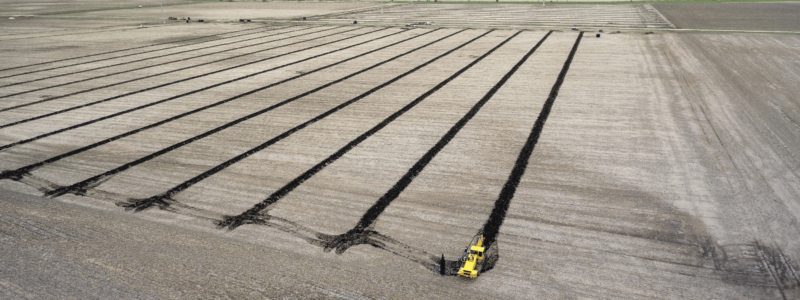Did you just purchase or inherit land, only to realize there are no sub-surface tile maps? This can feel a bit like driving at night without headlights. How do you handle drainage issues or plan for future subsurface tile installation without a clear map? This is a common problem we see clients running into – they don’t know if their newly acquired land has any tile, where it might be, or where to start.
“We’ve helped many landowners navigate the problem of missing drainage tile maps over the years,” says Pinion land advisor Quint Shambaugh. “It can make it hard to fix issues that arise and even harder to plan future installations or upgrades, but there are some ways to circumvent it.”
Quint shares tried-and-true advice he’s gathered from helping dozens of landowners through this issue:
1. Figure out what’s important to you on your farm.
Do you absolutely need to have tile maps? If you think your farm drains well enough where you would rather participate in minimal surface drainage or another practice, then maybe finding maps isn’t a priority. If you do believe tile drainage will be a necessary path forward then you’ll need to know if there is existing drainage on your property.
2. Start by looking for clues.
Take a trip around the farm. Does your property have any tile inlets, any outlets into a ditch, or any standpipes? Neighboring properties can also tell you about your own land. Does a downstream neighbor have outlets, did an upstream neighbor just put in a tile system? Though this information won’t tell you the entire story, it can clue you in to whether your land has existing drainage and if you need it.
3. Dig deeper with a land consultant.
If you determine a tile map is necessary and you want to find the exact sizes, slopes, and depths of possible drainage tile, you can hire a trained land advisor. They will be able to investigate soil type, topographic data, neighboring watersheds, and predictive analytics that determine where tile is located. They’ll also be able to design a custom tile system to improve your land.
4. Plan the method of installation to coincide with discovery.
There are benefits for both open trench and trenchless installation. While trenchless installation tends to be more cost effective with less disturbance to the farm, open trench installation may be more beneficial in the absence of tile maps. Since open trench allows you to locate existing tile as you install it can reduce the time spent searching for tile.
“The key here is to work with a drainage consultant who values saving money with the proper installation method and who can plan to open trench in the areas you need to search for existing tile,” advises Quint. “This can save you from wasting time and money.”
These are some helpful tips to get you started but remember that every farm has a unique DNA – no two drainage systems are exactly alike.
Connect with our team of land advisors for custom, innovative solutions to all your unique land improvement needs.






